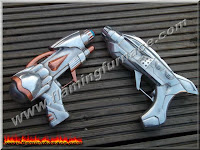



The sand moulding was very easy to make and I was able to lift the sun pattern without damaging the sun impression in the sand. The inner ribs also worked very well and the petrobond didn't fall out of the flask. I also got another bag of petrobond and in the images you can see the differance in the color. After many uses petrobond turns dark brown vs orange color for new petrobond.





My first sand mould was perfect but when I was finishing it I got distracted and forgot a very important thing, I didn't place my clamps on the flask. Here is a very important tip: The clamps or just a weight on top of the flask will prevents the molten metal from lifting the cope part (Hydrostatic pressure) and resulting in a pool of molten metal on the floor also burning the flask if it's constructed from timber. This causes a casting defect called FLASH (see flash image circled in red).
I made a lot of castings till this day and never forgot the clamps, so this can easily happen and can be very dangerous if you don't keep safety in mind. Because I always cast in the open on dry sand no harm was done. The only annoying part was to cut off, file and grind the casting FLASH. *** In the future I will post info explaining in more detail the most common casting defects***




My second casting was very sucessful, I didnt forget the clamps this time... :-)




On the top image 3rd from the left you can see the two sun castings. On the left is the sun from my first casting after cleaning the flash defects and giving it a bit of a polish and the right sun is the second casting which turned out to be a very good quality casting with zero defects. I drilled two holes in the sun and attached it on my garden wall with my eagle castings.
















































